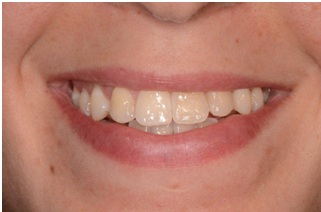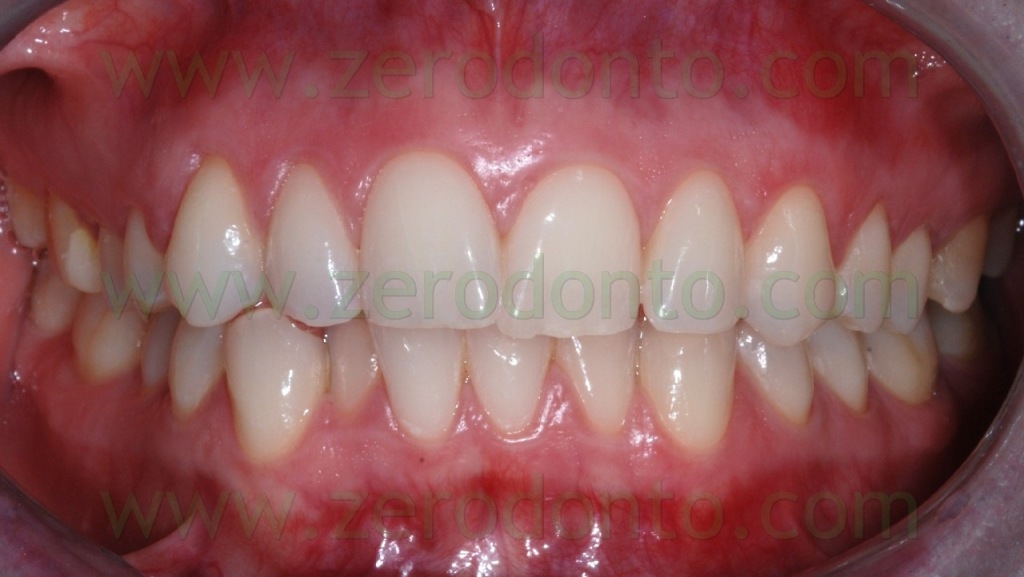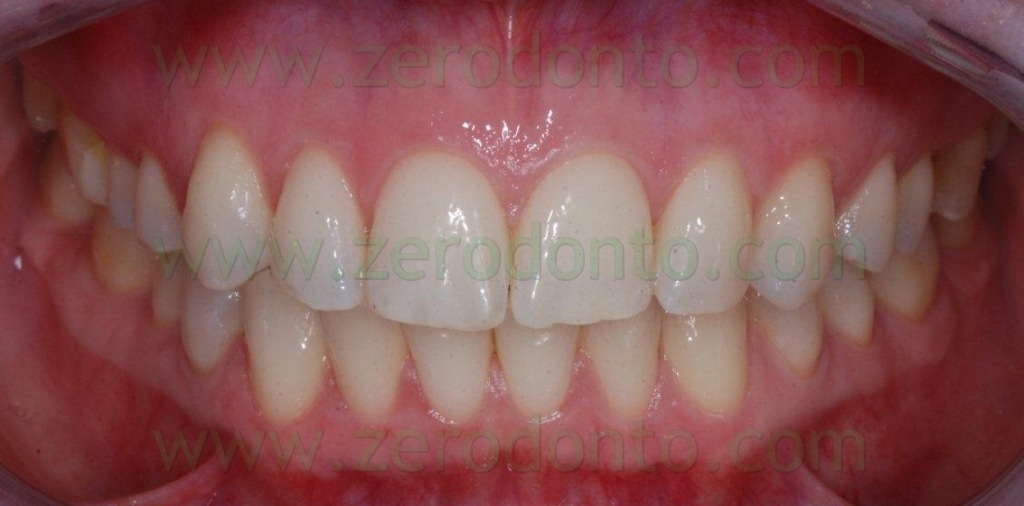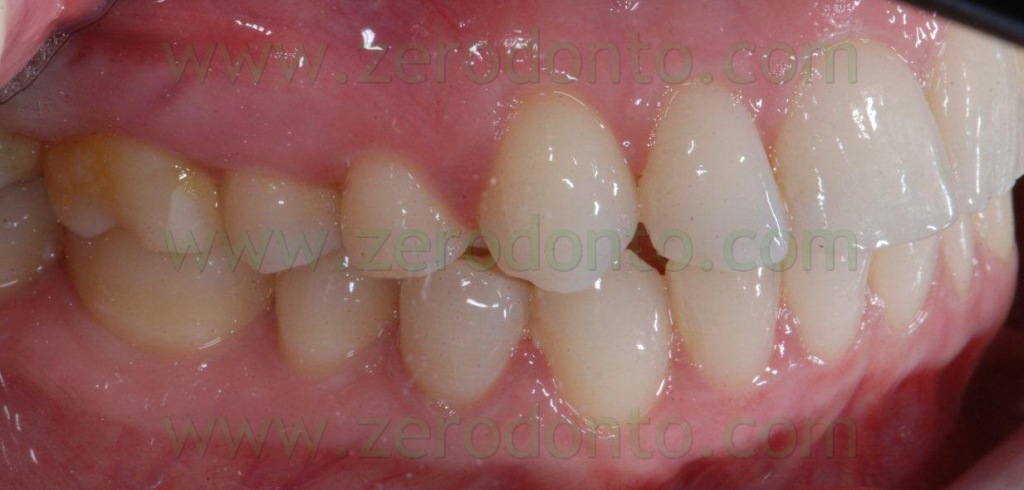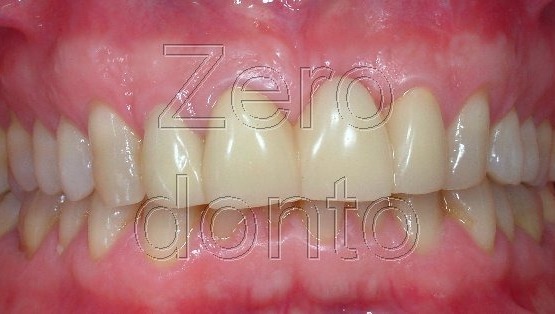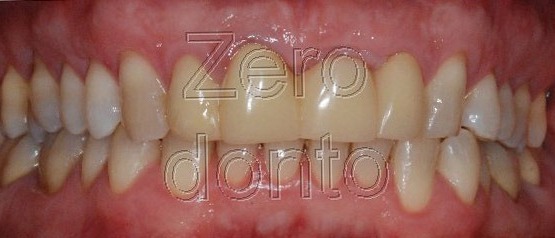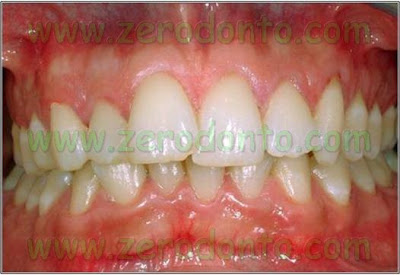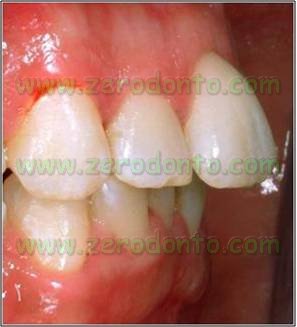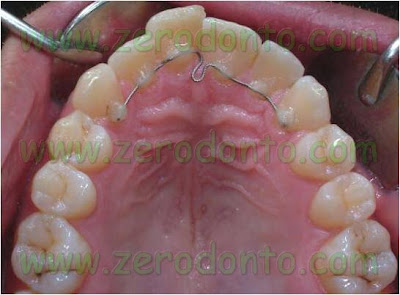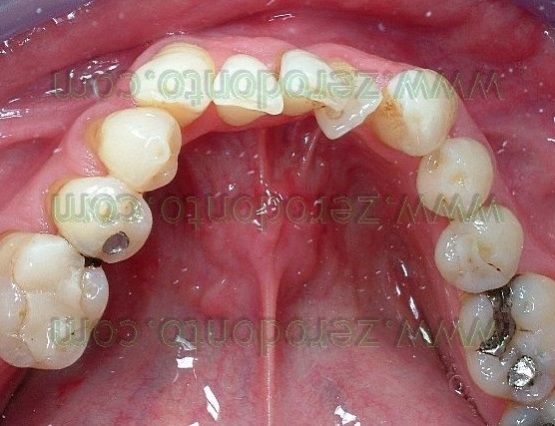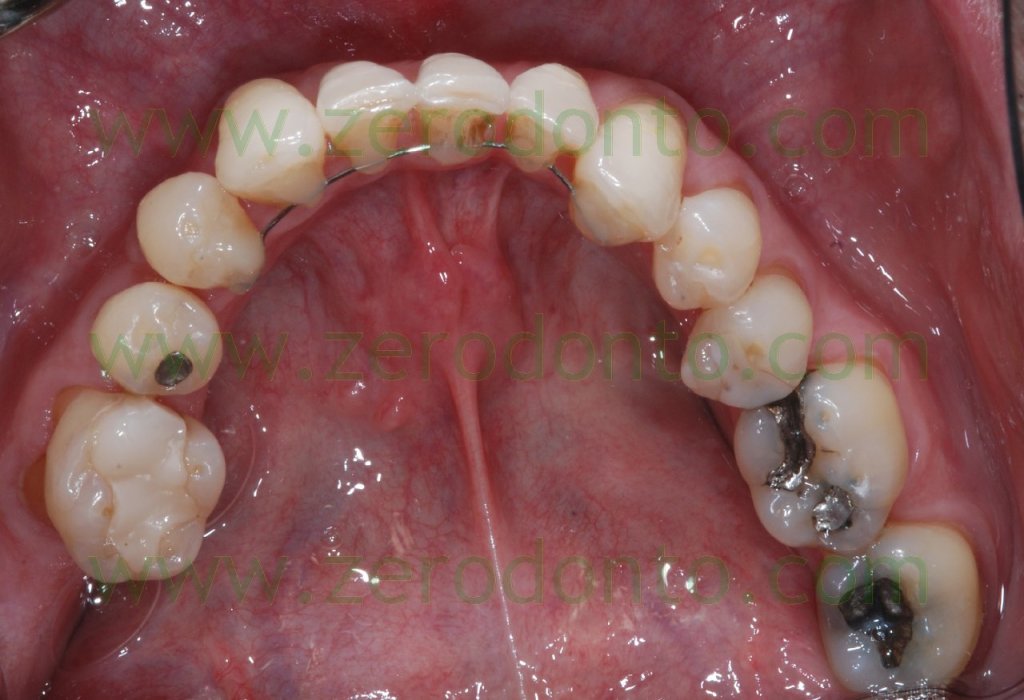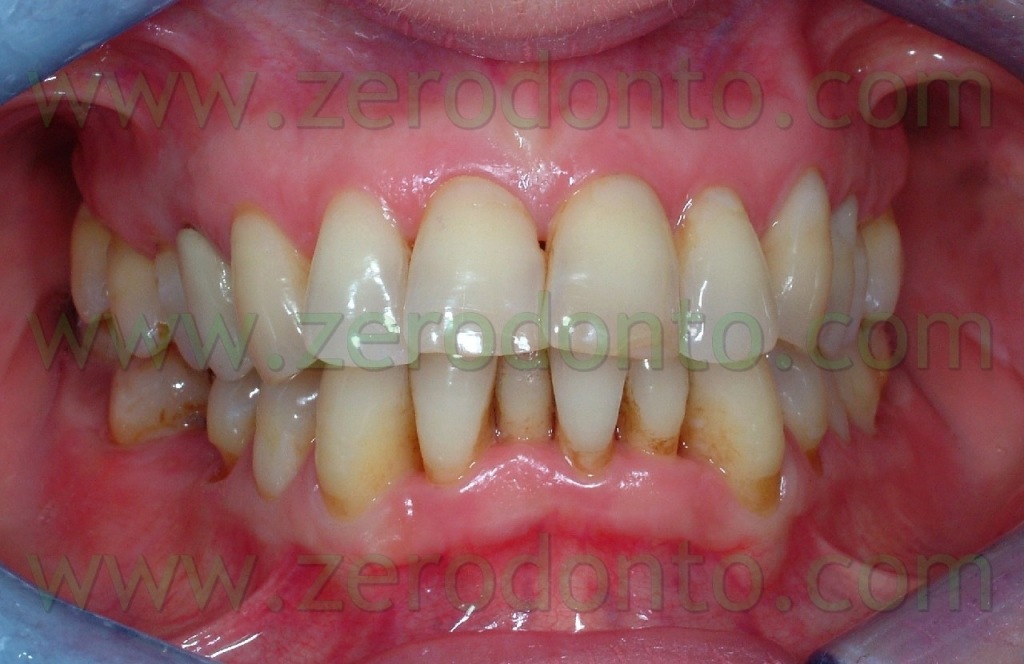Invisible aligners, lingual brackets or lingual Orthodontics without brackets?

When we talk about invisible orthodontics, we often refers to transparent aligners.
The aligners are less visible compared to metallic or ceramic vestibular brackets and create the optical effect of a transparent film visible on the teeth.
Numerous scientific studies, documented in literature, have been conducted on invisible aligners (bibliographical references and links further down this page).
Djeu G, Shelton C, Maganzini A. (Outcome assessment of Invisalign and traditional orthodontic treatment compared with the American Board of Orthodontics objective grading system) showed that invisible aligners “did not treat malocclusions as well as braces”. Uribe F, Cutrera A, Nanda R (A segmented appliance for space closure followed by Invisalign and fixed appliances.) assert that the aligners are deficient in their “ability to correct large anteroposterior discrepancies and occlusal contacts”.
Giancotti A, Greco M, Mampieri G (Extraction treatment using Invisalign Technique) say that with the invisible aligners “the space closure achieved with crown tipping and without correct root inclination making a further fixed appliance phase necessary”. According to Uribe F, Cutrera A, e Nanda R, this fixed appliance phase may also be necessary due to the limitations of transparent aligners “in achieving rotational and vertical movements”.
Studies carried out by Kuncio D, Maganzini A, Shelton C, and Freeman K (Invisalign and traditional orthodontic treatment postretention outcomes compared using the American Board of Orthodontics objective grading system.) demonstrate, in their group of patients, that those treated with the aligners “relapsed more than those treated with conventional fixed appliances”.
Studies by Nedwed V and Miethke RR show that patients accept more easily be treated with masks that with lingual brackets because they consider the therapy less annoying.
The absolute evolution is represented by the invisible fixed therapy without brackets that arises from the need to perform invisible therapies, without tongue and soft tissues pains or phonetic distortion, commonly caused by conventional brackets therapies.
The device without brackets is made of wires thin quite 1 mm and besides being invisible is also confortable, since patients refer they don’t feel its presence after few hours from the first application.
The bonding procedure is similar to those used for classical therapy with brackets, with no risk for dental surfaces.
Among the advantages of lingual orthodontics without brackets there are therefore an absolute invisibility, absence of soft tissues pain and no phonetic alteration.
Unlike the lingual brackets, which also allow the realization of an invisible treatment, with lingual orthodontics without brackets discomfort to the tongue and phonetic alterations are rare events and however limited only to the first hours after the device application.
This is possible because the device is thinner and whitout protrusions that can hurt the tongue.
This completely invisible and extremely comfortable therapy allows to treat all kinds of malocclusion (I, II and III Angle Class, open bite, deep bite … etc).
implantologia orale
Lingual brackets device
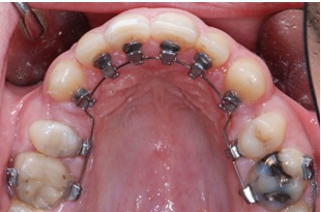
Lingual orthodontics without brackets device
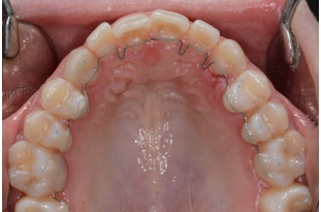
Invisible Orthodontics was presented by Dr. Anna Mariniello in national and international orthodontic congresses (World Society of Lingual Orthodontics, European Orthodontic Society, the Italian Society of Orthodontics) and has been published in specialist journals.
It is also widely documented in the blog of Dentistry www.zerodonto.com, in the category “invisible orthodontics”.
References
1-Am J Orthod Dentofacial Orthop. 2014 Oct;146(4):411.
Simon M, Keilig L, Schwarze J, Jung BA, Bourauel C.
2- Angle Orthod. 2014 Nov 20.
Efficacy of clear aligners in controlling orthodontic tooth movement: A systematic review.
Rossini G, Parrini S, Castroflorio T, Deregibus A, Debernardi CL.
3- Orthodontics (Chic.). 2011 Winter;12(4):386-95.
A segmented appliance for space closure followed by Invisalign and fixed appliances.
Uribe F1, Cutrera A, Nanda R.
4- Am J Orthod Dentofacial Orthop. 2009 Jan;135(1):27-35. doi: 10.1016/j.ajodo.2007.05.018.
Kravitz ND, Kusnoto B, BeGole E, Obrez A, Agran B.
5- Angle Orthod. 2007 Sep;77(5):864-9.
Kuncio D, Maganzini A, Shelton C, Freeman K.
6- Prog Orthod. 2006;7(1):32-43.
Extraction treatment using Invisalign Technique.
Giancotti A, Greco M, Mampieri G.
7- J Am Dent Assoc. 2002 Mar;133(3):369-71.
Orthodontics and the general practitioner.
Christensen GJ.
8- J Orofac Orthop. 2005 Mar;66(2):162-73.
Motivation, acceptance and problems of invisalign patients.
[Article in English, German]Nedwed V1, Miethke RR.
9- Am J Orthod Dentofacial Orthop. 2005 Sep;128(3):292-8; discussion 298.
Djeu G, Shelton C, Maganzini A.
Clinical Cases
Clinical Case 1: Clinical procedures to apply active retainers
Clinical Case 2: Treatment of crowded mandibular arch and deep bite
Clinical Case 3: Case of crowded teeth and protrusion of maxillary teeth
Clinical Case 4: Crowded and protruded maxillary teeth
Clinical Case 5: Invisible orthodontics in case of severe mandibular crowding
Clinical Case 1: Clinical procedures to apply active retainers
A 28-year old female patient presented with maxillary crowded teeth, the right canine in ectopic position and the mandibular midline moved on the right side. The patient requested for a comfortable and invisible therapy, without phonetic alterations and problems to the gums. Therefore, the malocclusion was treated with lingual bracketless orthodontics. After the application of the retainers, the patient was monitored every 3-4 weeks. Dental alignment was obtained after about 10 months, with complete satisfaction of the patient. Then, the active retainers were substituted with passive ones. Read the full article
Clinical Case 2: Treatment of crowded mandibular arch and deep bite
The patient wanted to align the mandibular arch, asking for an invisible and painfree therapy; it was performed with the lingual bracketless technique together with pre-activated retainers. One month after, the crowding was significantly reduced. The patient was monitored every 3-4 weeks. When the alignment was completed, the active retainer was substituted with a passive one. Thanks to this innovative technique, the patient was satisfied because of the absence of tongue and gum complaints as well as the invisibility of the orthodontic appliance. Read the full article
Clinical Case 3: Case of crowded teeth and protrusion of maxillary teeth
The patient was motivated to align his teeth with an esthetic and inivisible orthodontic therapy. The patient presented with crowded teeth and a severe protrusion of the maxillary incisors.It was applied an active retainer to both arches from canine to canine; the patient was monitored every 3-4 weeks and the wires were detached every time in the area where the activation was necessary. The maxillary alignment was achieved in about 2 monts, while the mandibular one in 6 months. The esthetic result was excellent.
Read the full article
Clinical Case 4: Crowded and protruded maxillary teeth
Very complex case of a 62 year-old patient, with a severe crowding at the mandibular arch and treated and stabilized periodontal disease. Despite the habitual sessions of oral hygiene, the patient could not keep the front mandibular teeth clean because of their malposition.Moreover, he did not want a visibile and annoying treatment. Consequently, it was proposed an insivible orthodontic therapy with active retainers.
The alignment was obtained after 10 months, performing a slow repositioning of the teeth and frequent sessions of tartar removal. The final outocome was excellent, particularly considering the severe initial condition.
Read the full article


